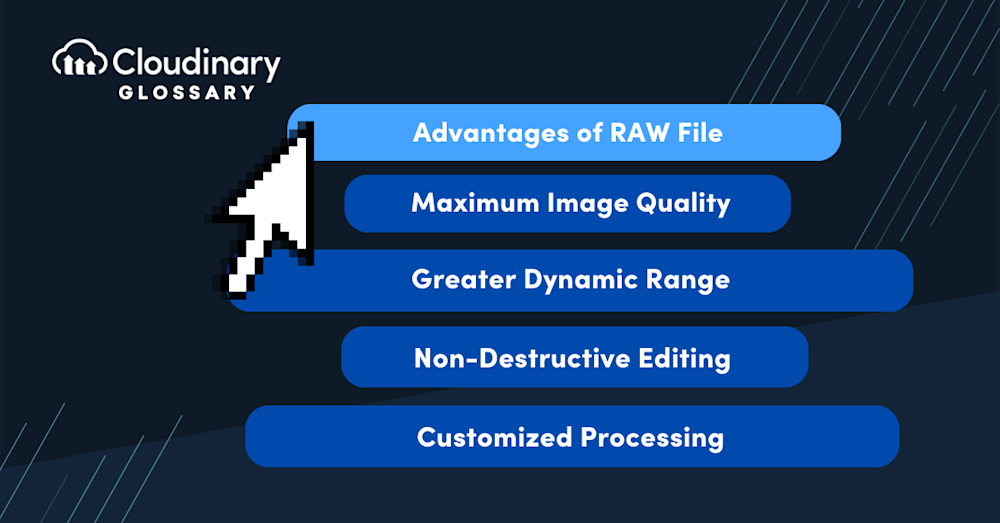What Is a RAW File?
A RAW file is an unprocessed image file that contains raw, uncompressed data directly from the camera’s image sensor. Unlike other image file formats like JPEG or PNG, which apply in-camera processing and compression, a RAW file preserves all the original information captured by the sensor, including color data, exposure, and other metadata.
RAW files are typically specific to certain camera manufacturers, such as Canon’s CR2 or Nikon’s NEF formats. While the specific file extensions vary, all RAW files share the common trait of containing unaltered sensor data.
Advantages of RAW File
Utilizing RAW files in your photography workflow offers several significant advantages:
- Maximum Image Quality – RAW files capture the full range of information the camera’s sensor captures, allowing for maximum image quality and detail. This provides greater flexibility during post-processing, resulting in superior final images.
- Greater Dynamic Range – RAW files retain a higher dynamic range than compressed formats like JPEG. This allows for better recovery of details in both shadows and highlights, preserving image information that may have otherwise been lost.
- Non-Destructive Editing – RAW files allow for non-destructive editing, meaning that adjustments made to an image can be altered or reversed without permanently affecting the original data. This gives photographers greater control and flexibility during the editing process.
- Customized Processing – RAW files enable photographers to apply their unique processing to images, including adjustments to white balance, exposure, contrast, tonality, and more. This level of customization ensures that the photographer’s creative intent is fully realized.
Disadvantages of RAW File
While RAW files offer significant advantages, they also come with a few considerations to keep in mind:
- Larger File Size – Due to the lack of compression, RAW files tend to have larger file sizes than formats like JPEG. This can impact storage requirements and slow down a workflow when working with multiple files.
- Increased Post-Processing Time – The need for post-processing RAW files adds an extra step to the workflow, requiring time and effort to adjust and optimize images. This may not be ideal for photographers looking for quick, immediate results.
- Limited Compatibility – RAW files are typically proprietary to specific camera manufacturers, meaning they may not be universally compatible with all software or devices. However, many software applications and photo-editing tools now support a wide range of RAW formats.
Where Are RAW Files Used?
RAW files find applications in a variety of photography genres and professional scenarios:
- Professional Photography – RAW files are extensively used by professional photographers who require the utmost image quality and flexibility for their commercial or artistic work. This includes landscape, portrait, fashion, and product photography genres.
- High-Quality Prints – Photographers often prefer RAW files to create large prints or exhibit their work. The higher resolution and dynamic range of RAW files allow for greater detail and tonal accuracy in these prints.
- Post-Processing and Retouching – RAW files serve as the foundation for advanced post-processing techniques and retouching, offering unparalleled control and precision in manipulating images.
- Archival Purposes – RAW files are sometimes used for long-term archival storage, ensuring that the original, unprocessed image data is preserved and can be accessed if needed in the future.
Final Thoughts
RAW files allow photographers to capture and preserve the highest quality image data directly from the camera sensor. The advantages of working with RAW, such as maximum image quality, greater dynamic range, and non-destructive editing, make it a preferred format for professionals and enthusiasts.
While RAW files require additional post-processing time and larger storage space, their flexibility and creative control are worth the investment. By leveraging cloud-based media platforms like Cloudinary, photographers can efficiently manage, store, and optimize their RAW files, ensuring seamless integration into their workflow.
Streamline your media workflow and save time with Cloudinary’s automated cloud services. Sign up for Cloudinary and unlock the full potential of RAW file processing and management in your photography journey today.
Additional Resources You May Find Useful:





